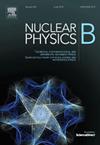Prototype Cherenkov detector characterization for muon tomography applications
Abstract
Muography is an innovative imaging technique using naturally produced elementary particles – atmospheric muons – used to determine the distribution of density inside massive objects. The modification of the particles flux – by scattering or absorption – reflects the contrasts in density within the medium and therefore offers the possibility for an image of the crossed volumes. In most muography setups the imaging process is based on the tracking of the particles which accounts for the absorption or the scattering of the muons trajectories. Neither the energy nor the identity of the particles (the so-called PID) is exploited since this information traditionally relies on the use of calorimeters and/or high intensity magnetic fields. Both these techniques hinder detector portability which in the case of muography is important and this renders them impractical for its purpose. In this paper we characterize the performance of a simple and small water Cherenkov detector capable of providing some insights on the energy of muons and the PID for the crossing particles that could potentially improve the background rejection for a muography survey when operating in conjunction with a muon telescope. We tested a prototype of such water Cherenkov detector in combination with two small muon hodoscopes. Both systems are using the same opto-electronics chain – optical fibers and pixellized photosensors – and the same data acquisition (DAQ) readout system which ensures an easy integration and implementation within presently running systems. This article presents the test setup, the detector response to cosmic muons and its performance evaluation against a basic simulation of its geometry and detection principle.

 求助内容:
求助内容: 应助结果提醒方式:
应助结果提醒方式:


